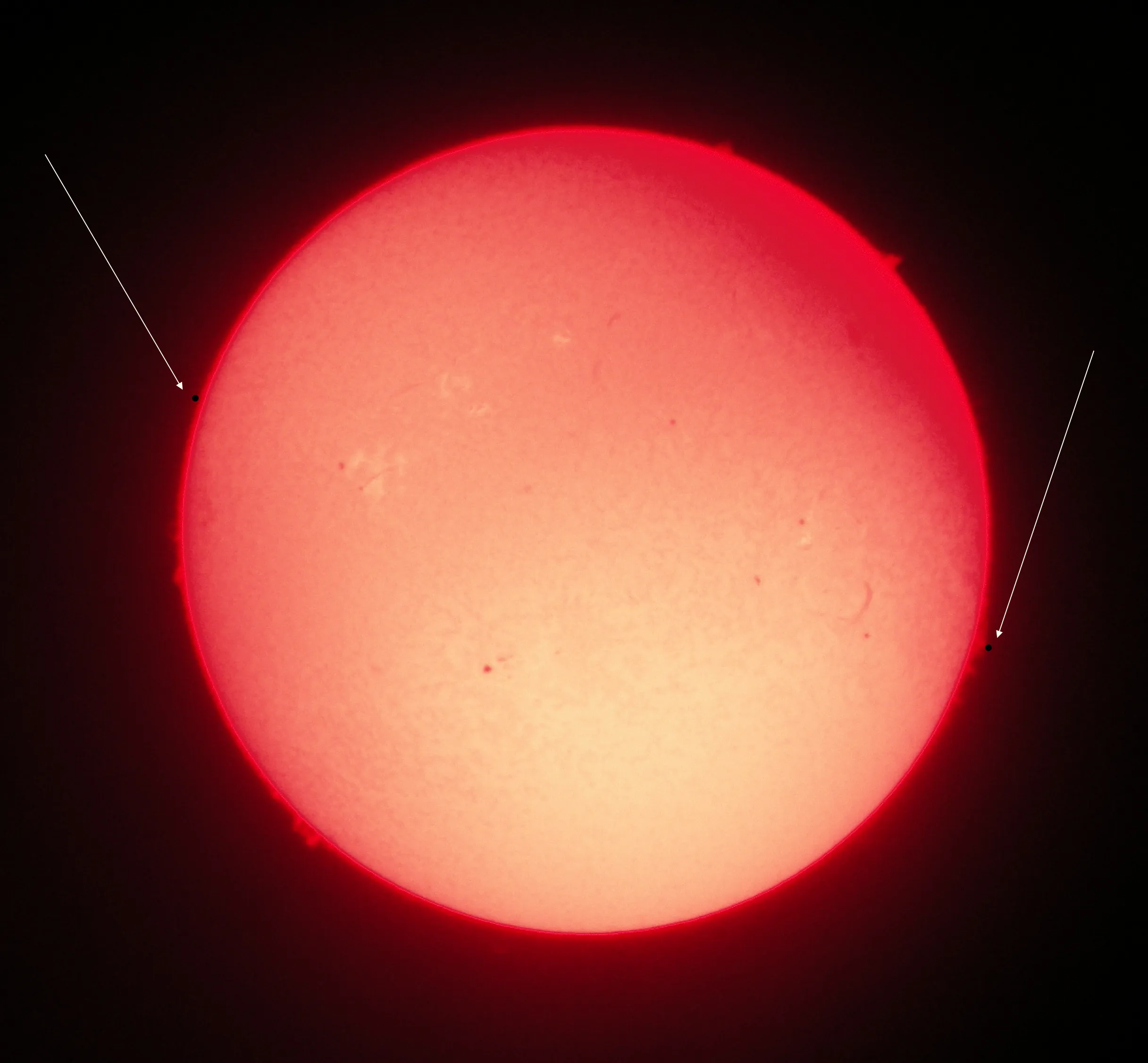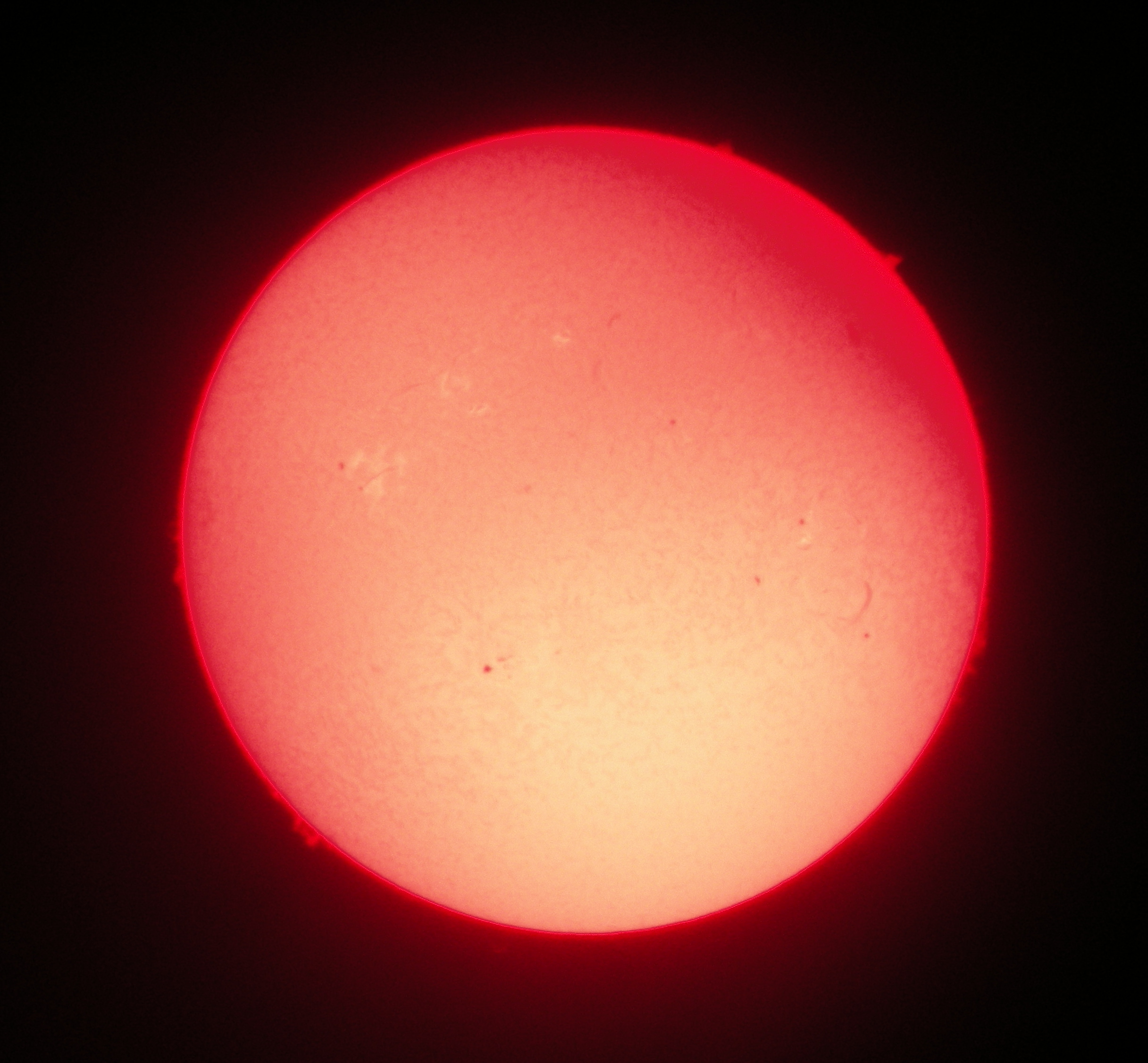In this short post, I would like to share with you my ideas, on how can we use the Hydrogen-alpha filter for solar observations during exceptional situations.
The situations, that I am going to take into account are mostly solar eclipses, but also internal planet transits. We have less than 2 months to Mercury transit from now, and a solar eclipse (in this case, even smallish, partial) occurs around every half a year. Unfortunately, we won’t see Venus transit across the solar disk soon, however… read this text to the end and think about other forthcoming possibilities to capture a similar phenomenon.
1. HYDROGEN-ALPHA (H-ALPHA) FILTER – WHAT IT IS?
The h-alpha filter is a specific deep-red spectral line with a wavelength of 658nm in the ear, belonging to the Balmer series. Balmer series represents one of six hydrogen spectral series, that describe the hydrogen atom spectral line emissions. The visible spectrum of light produced by hydrogen features 4 wavelengths: 410nm, 434nm, 486nm, and 656nm. For the astronomical observations, the most important is the last one – 656.28nm, which is responsible for the aforementioned deep-red spectral line. This line is developed when the electrons pass from the second to the third atom orbit, giving the output wavelength of 656.28nm (Pic. 1).
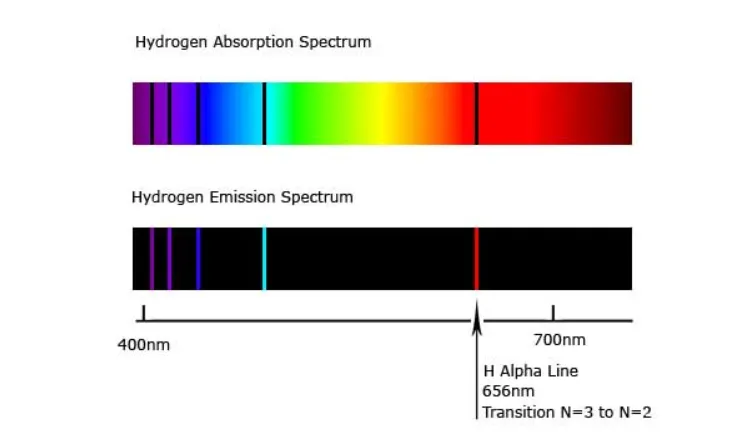

For the purpose of the block all other wavelengths, leaving this very narrow bandwidth, the H-Alpha filters are produced. This very small bandwidth is emitted by the number of emission nebulae. Apart from it, the H-alpha allows us to observe unique features of the solar atmosphere, containing both solar prominences and the chromosphere. Hydrogen remains the most abundant in hydrogen, however, only the most external parts of the solar atmosphere have a temperature low enough where the hydrogen can exist in its atomic form. They are the chromosphere and photosphere, where the hydrogen atom has high energy, releasing more photons in the hydrogen-alpha spectral line.
Unlike white-solar filters, the H-alpha one gives us the opportunity to observe the remarkable and dynamic features of the most external parts of the solar atmosphere. To the phenomena, that remain invisible without an H-alpha filter we can include: solar plages, prominences, filaments and from time to time also solar flares. The purpose of this text assigns the biggest importance to solar prominences, being usually extended outside of the visible solar disk likewise we see during total solar eclipses.
2. OBSERVATION OF THE SUN WITH H-ALPHA – EXAMPLES
The H-alpha filter is essential to observe:
A. Solar fibrils – that are placed in the middle chromosphere at altitude 1,5-2 – 4k kilometers above the solar surface. Their temperature is sneaking around 18000K. The solar fibrils are two-dimensional sheet-like structures, long and thin in appearance. The solar fibrils are known as spicules, which are observed at the solar limb.

B. Solar spicules – are dynamic straw-like structures, observed at the surface of the solar disk unlike fibrils, observed at the solar limb. Both solar spicules and solar fibrils are small and short-lived jets, which have great consistency and thin shape with considerable heights up to 500km. All these single structures are visible for no longer than 15 minutes (Roger, Kaufmann, William, 2008).
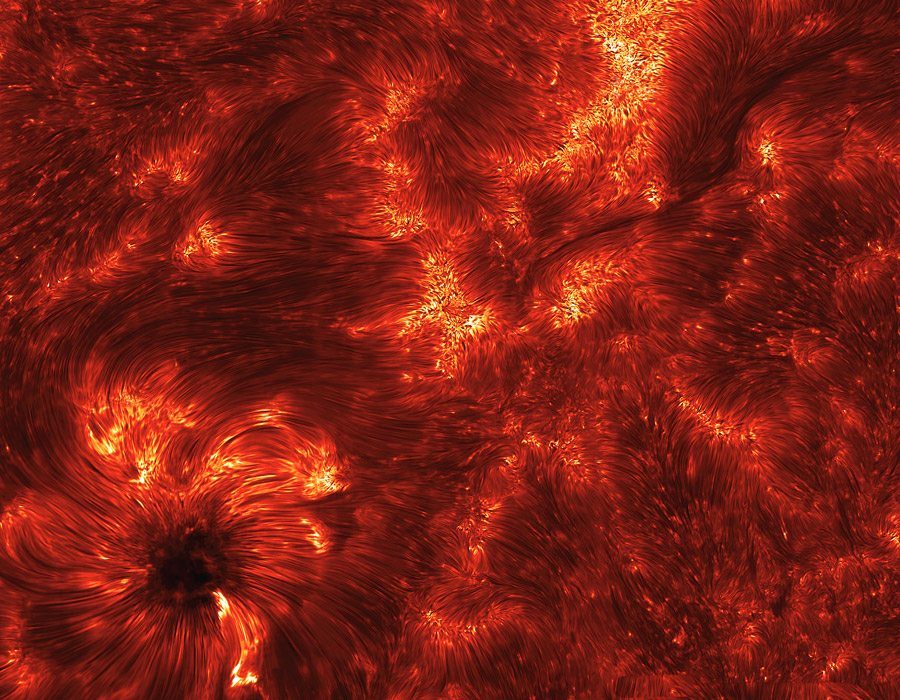
C. Ellerman bombs – otherworldly called “solar hydrogen bombs” as intense brightenings of the extended winds of H-alpha, H-beta, and H-gamma (Rutten et al., 2007). These phenomena are the effect of the magnetic reconnection events happening within the regions of the solar atmosphere, where the temperature is the lowest. They have a flame-like morphology when observed near the solar limb (Chen, et al., 2019).
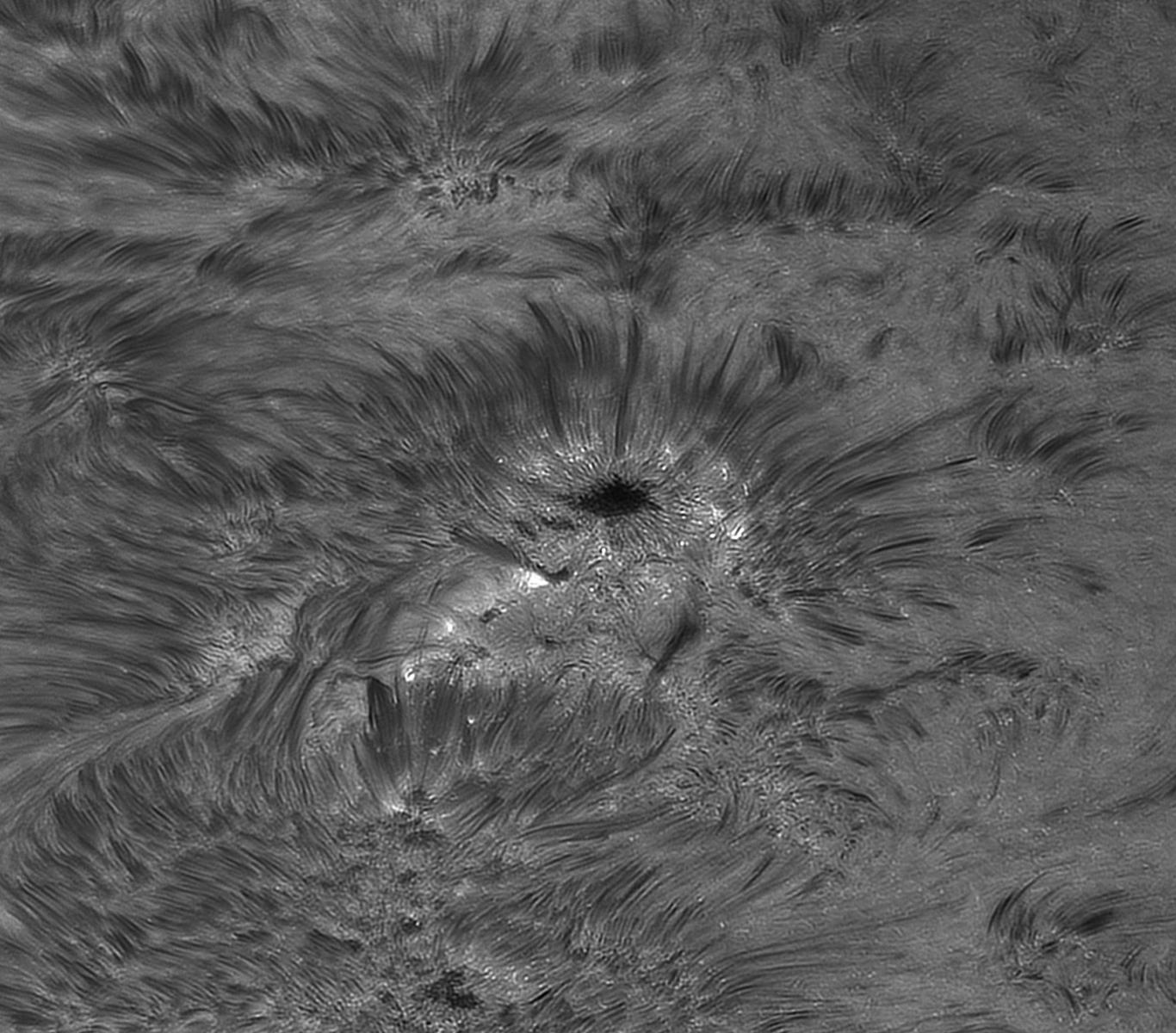
D. Solar flares – are a giant release of energy from the Sun resulting in a sudden flash leading to an increase in solar brightness. However, in general, they cannot be detectable in total solar irradiance. Usually, solar flares are observed near the solar surface or in the proximity of the sunspots. These phenomena last up to 1 hour, blasting a huge X-ray, gamma-ray, or visible light into space. The powerful solar flares can be related to coronal mass ejection as well as plasma and particle ejections throughout the outer corona into open space.

E. Solar plages – are seen as bright regions – belts across the solar disk, usually surrounding a sunspot or group of sunspots. Solar plages appear along with faculae too, sometimes they form a cloud shape.
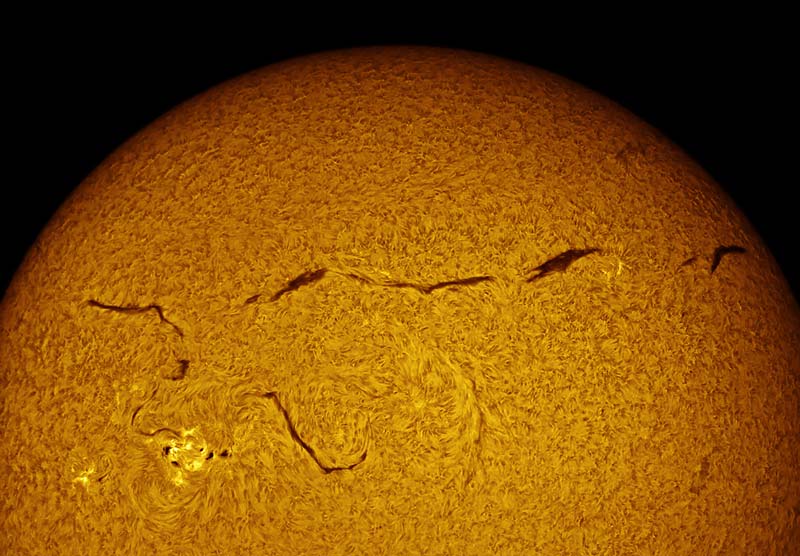
F. Chromospheric network – perfectly seen in H-Alpha as a web-like network on the solar disk surface. The chromospheric network remains a granule surface, built by supergranulae structures with a diameter reaching sometimes up to 35000km. These structures cover the entire Sun and evolve constantly. Their appearance is caused by convection currents of the plasma generating convective cells, which tops look like single granules on the solar surface.
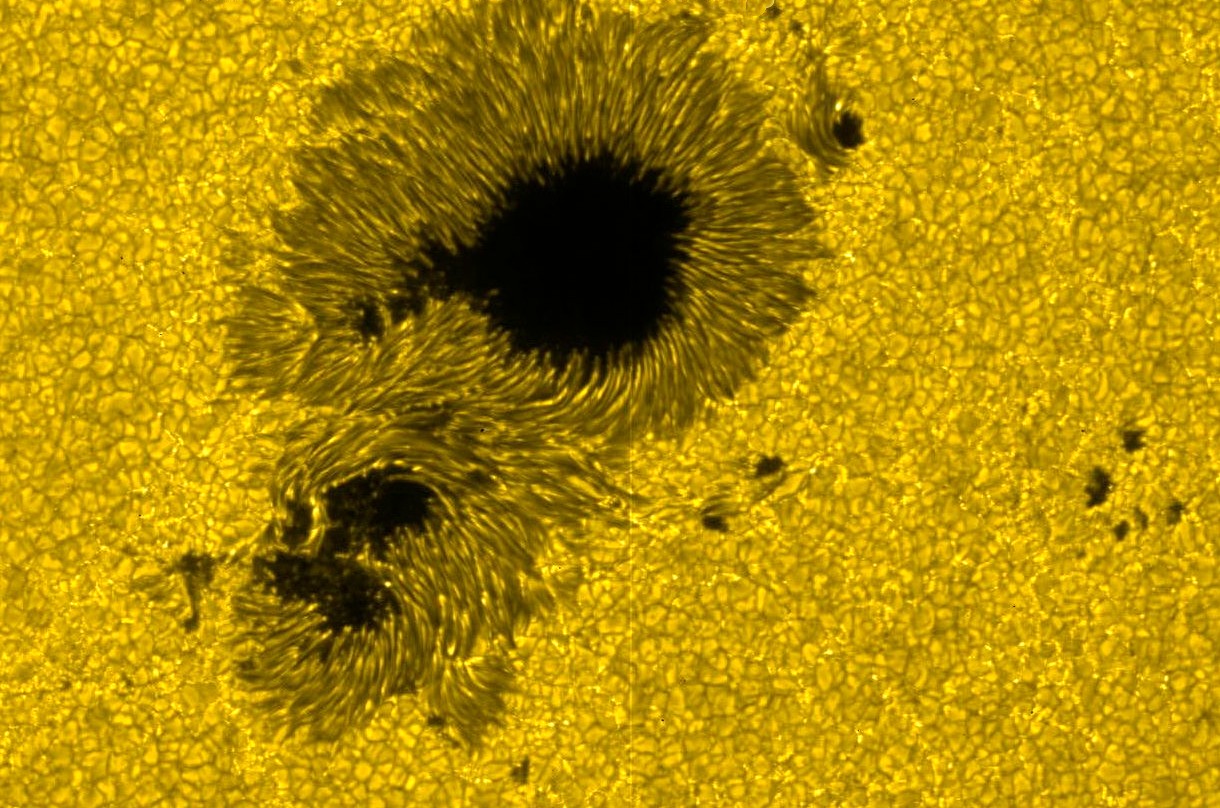
G. Faculae – bright spots and canyon-looking structures hanged between the solar granules. Faculae are short-lasted convections, featuring a bit darker edges, driven by descending solar plasma. As a result, the middle part of these structures is slightly hotter, and most external parts remain slightly cooler than the surrounding photosphere. Solar faculae can be observed also without an H-alpha filter near the solar limb.
H. Prominences – the most representative phenomena, which can be seen with an H-alpha filter, even without a serious magnification. These objects are definitely the biggest ones, possible to observe through the H-alpha filter. I wrote a bit more about prominences in this article. I only add up, that the typical height of prominence is up to 100 thousand km, sometimes between 100-200 thousand km, whilst exceptional ones can reach 500 or even 800 thousand km. The H-alpha option gives us the opportunity to see many kinds of prominences (Pic. 9).
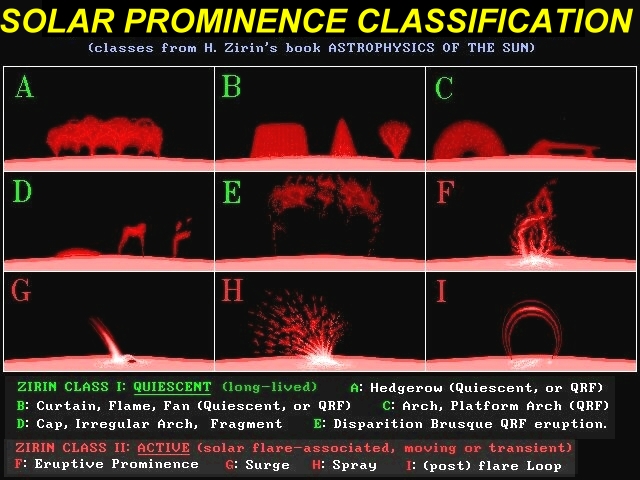
At the end of this section let’s see some Sun images taken with an H-alpha filter:
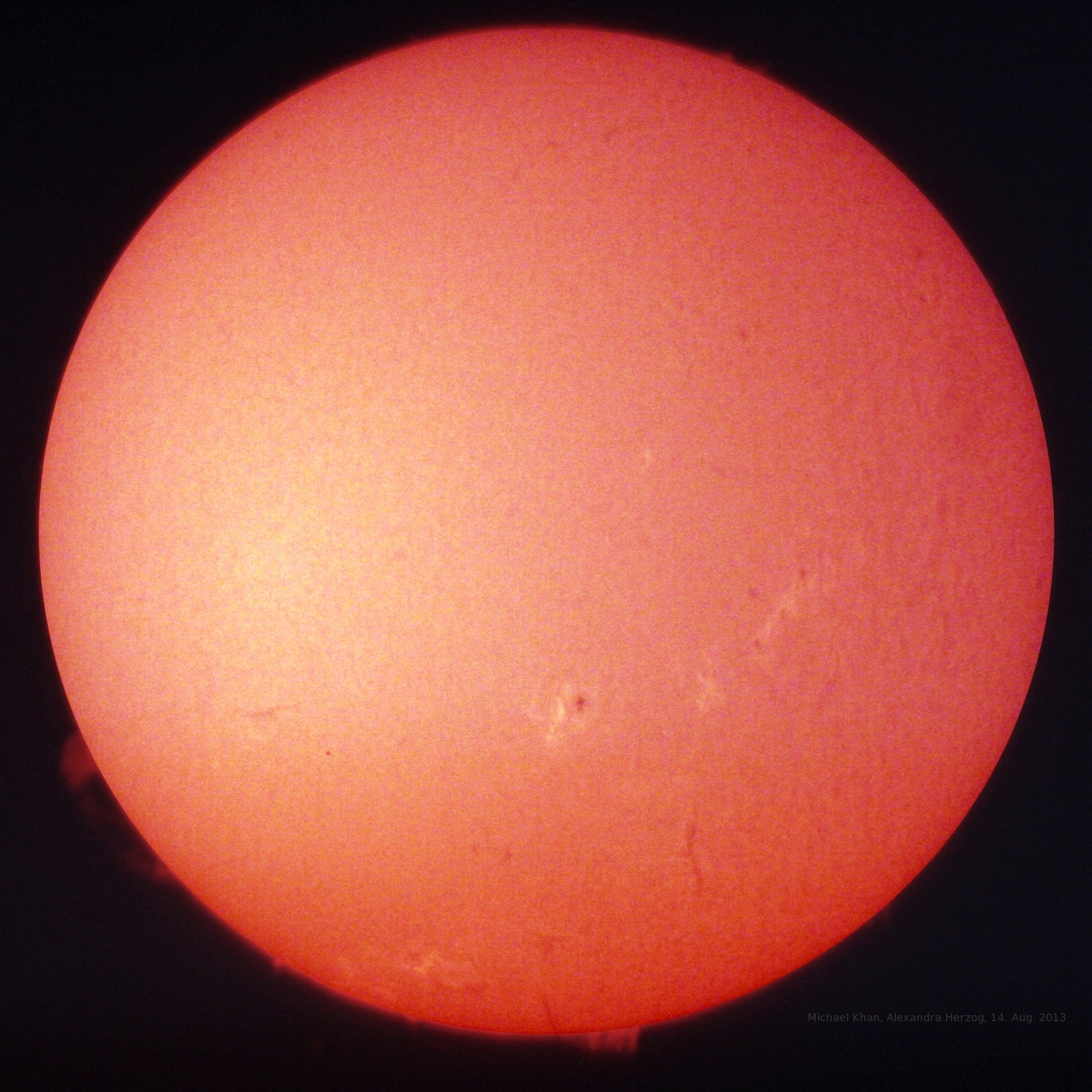
3. FORTHCOMING SOLAR PHENOMENA WORTH ATTENTION (YEARS 2019-20)
Let’s see what forthcoming solar phenomena can be worth seeing within the nearest year since the publication of this article.
3.1 Transit of Mercury 11-12 November 2019 – it’s a quite rare celestial event when the first planet of our Solar System moves across the solar disk. Recently we could see this phenomenon about 3,5 years ago. The next one will be possible to observe in 2032. Then all the more necessary, you should focus on this occurrence. To be prepared for watching the Mercury transit with H-Alpha filters you must take into account, that this time can be a bit extended.
Doing a simple computation: If on 11th November the Sun will be at the distance 0.990184au (148 131 526 km) to Earth, and its radius is 695510km, then an angular radius of the Sun should be about 0.2692 degrees, which corresponds to 0° 16′ 9.12″ angular size. Now let’s have a look at what the angular size of the prominences is.
If our prominences have a standard 100-200 thousand km of height, then…

, which should give 0° 2′ 19.34″ angular height. If we consider 200000km, so twice more – 0° 4′ 38.68″.
If we consider the biggest exceptions: 500 and 800 thousand kilometers, then we should get accordingly:
0° 11′ 36.7″ – for 500000km prominence
0° 18′ 34.72″ – for 800000km prominence.
Transferring it to the time, when Mercury can be seen BEFORE 1st and AFTER 4th contact we should make another simple equation having basic knowledge about this event.
The transit of Mercury will last about 5 hours and 29 minutes (329 minutes in total). By the way easier for us, when neglecting local circumstances and assuming, that this duration is applicable anywhere on the Earth when transit will be visible.
Next, let’s consider a relation between transit across the solar disk and possible transit across the… adjoining prominences!
If the solar diameter is 1391020km and an additionally considered prominence with a height of about 100000km, then:

, which means, that for typical prominence size, (what big likelihood is that it happen) we should gain another 38 min before and after contacts. Obviously, this time can be extended, depending on how big the prominences rise. For 200000km prominence height, it will be about 1h16min, Awesome! It’s hard to take into account bigger prominences because they happen only rarely, but Mercury is small relative to them, although it’s worth watching the Sun much more before and after the transit.
Even if the prominences won’t be present on the day of transit, this occurrence can be a bit extended because of the solar chromosphere. Solar chromosphere counts usually 3-5 thousand km of thickness (in extremal cases up to 10000 km), which means, that an observer should gain around 4 additional minutes of transit (2 before I contact and another 2 after the IVth contact).
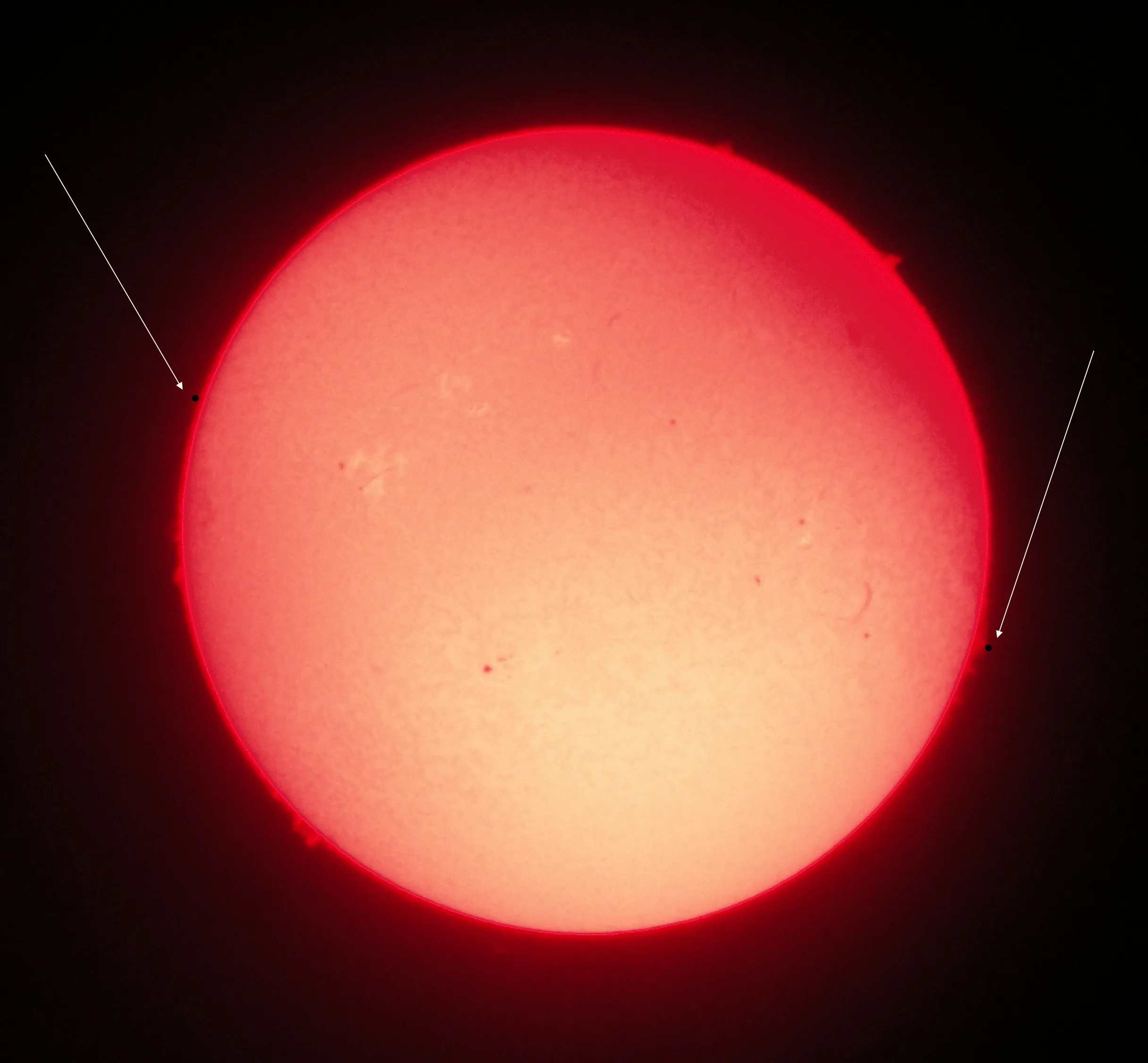
3.2 Solar eclipses: 26.12.2019 and 20.06.2020 – two forthcoming annular eclipses within one year, which give the opportunity for extended observation. If we know the angular size of solar prominences computed above, then we can gauge when our observation can begin. The simple computation of the solar eclipse circumstances, known from the Mercury transit example, cannot take place here. The reason is the Earth’s curvature, which cannot be omitted. There are professional computations done by Meeus and Bessel, although for the sake of simplification, I won’t use them in this article. This is a wide issue to develop in further writing. For the time being, I show you ready examples simulated in simple sky charts software like Cartes du Ciel.
Let’s have a look at the closest forthcoming annular eclipse. Madurai city in southern India falls in the grazing zone of 2019 December 26 annularity. The phenomenon starts at 2:37 UT and finishes at 5:45 UT. If we take into account possible H-alpha observation, then this event is going to be extended up to about 1 hour (Pic. 14), depending on the prominence’s appearance and size.
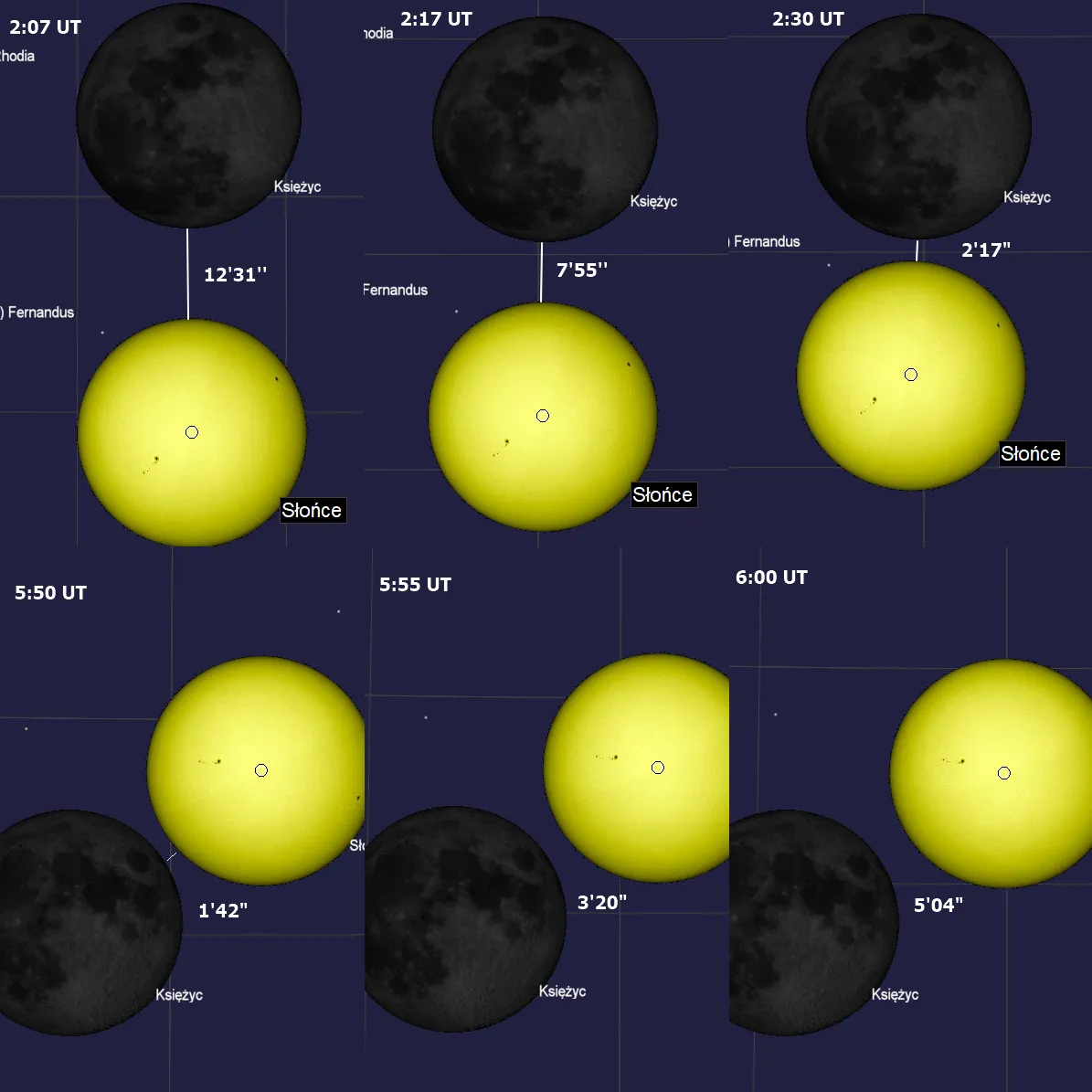
In another case, have a look at the location, where the eclipse itself won’t happen this day.
Andilana Beach in Madagascar is known to me for the remote observation of a partial solar eclipse in 2016. The 2019 solar eclipse will pass by the biggest African island in the northeast direction (Pic. 15).

The penumbral area won’t be too far from the northernmost part of Madagascar (about 130km) and Andilana Beach (330km), which means, that the lunar limb will sweep closely to the solar disk (Pic. 16) giving possible opportunity to be seen through H-alpha filters. It’s going to be such a protuberant solar eclipse or sth like that 🙂
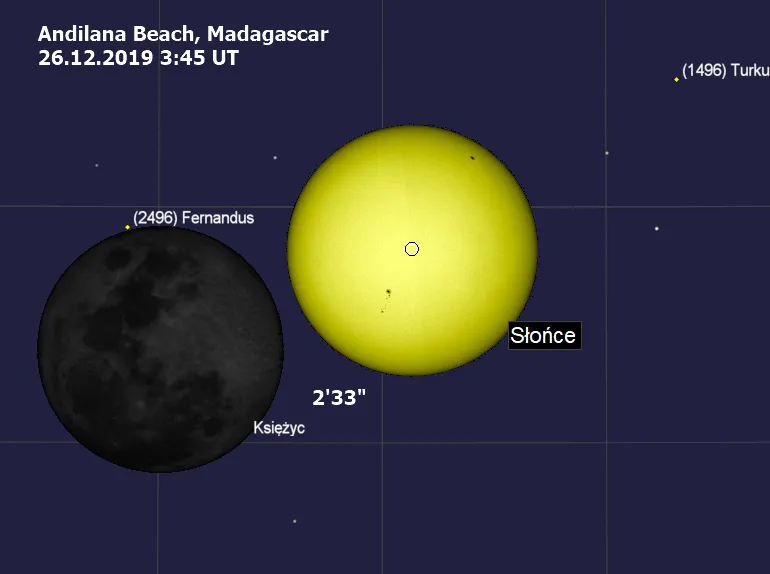
Because I am from Poland, I cannot omit probably the most intriguing solar eclipse in my life. I am not talking about totality or annularity now, but about sth like an edge solar eclipse, which happens in the same frequency as the total one in the location given. In 2020 June 21, when a deep annular solar eclipse will sweep above the Middle East, heading next towards Pakistan and Tibet, the penumbral area advances the southernmost Polish corner (Pic. 17).
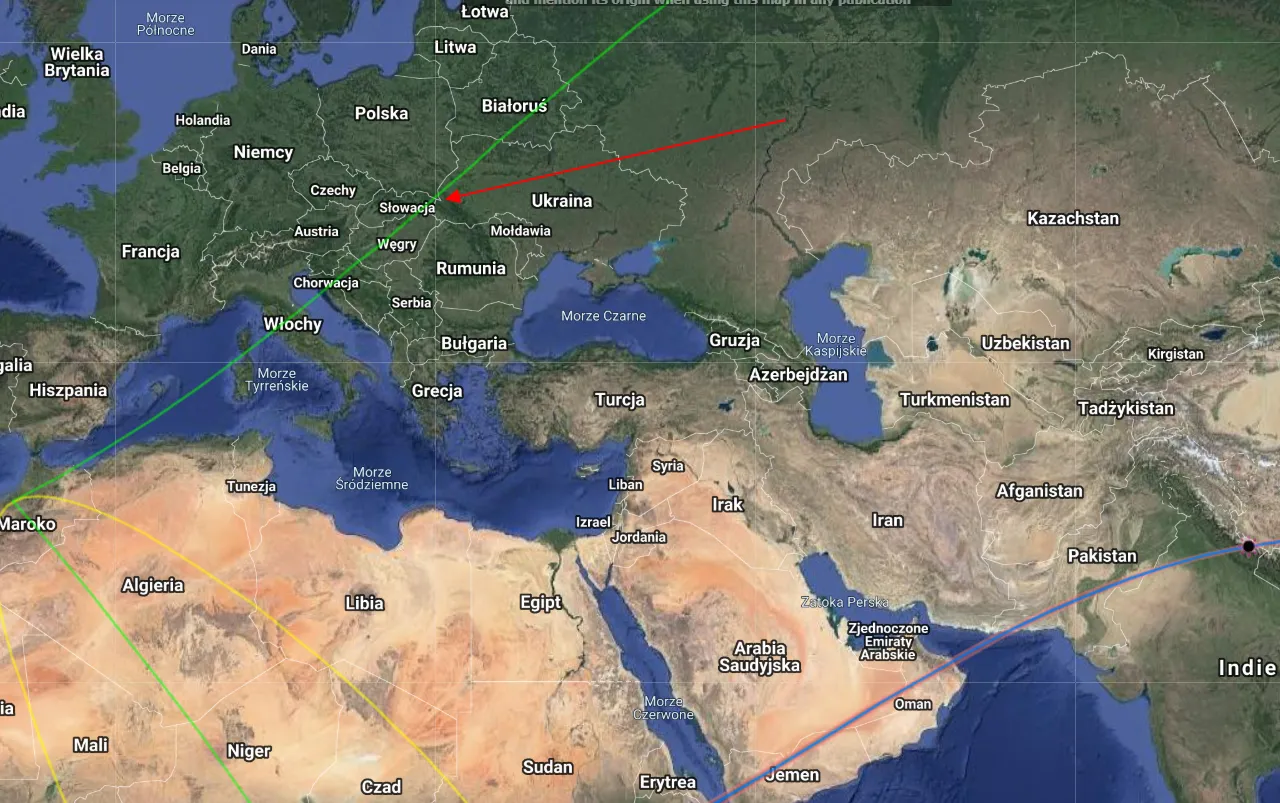
As a result, the partial phase can be seen only in a few villages in Bieszczady Mts (Pic. 18) with barely seen magnitude at most 0,007.
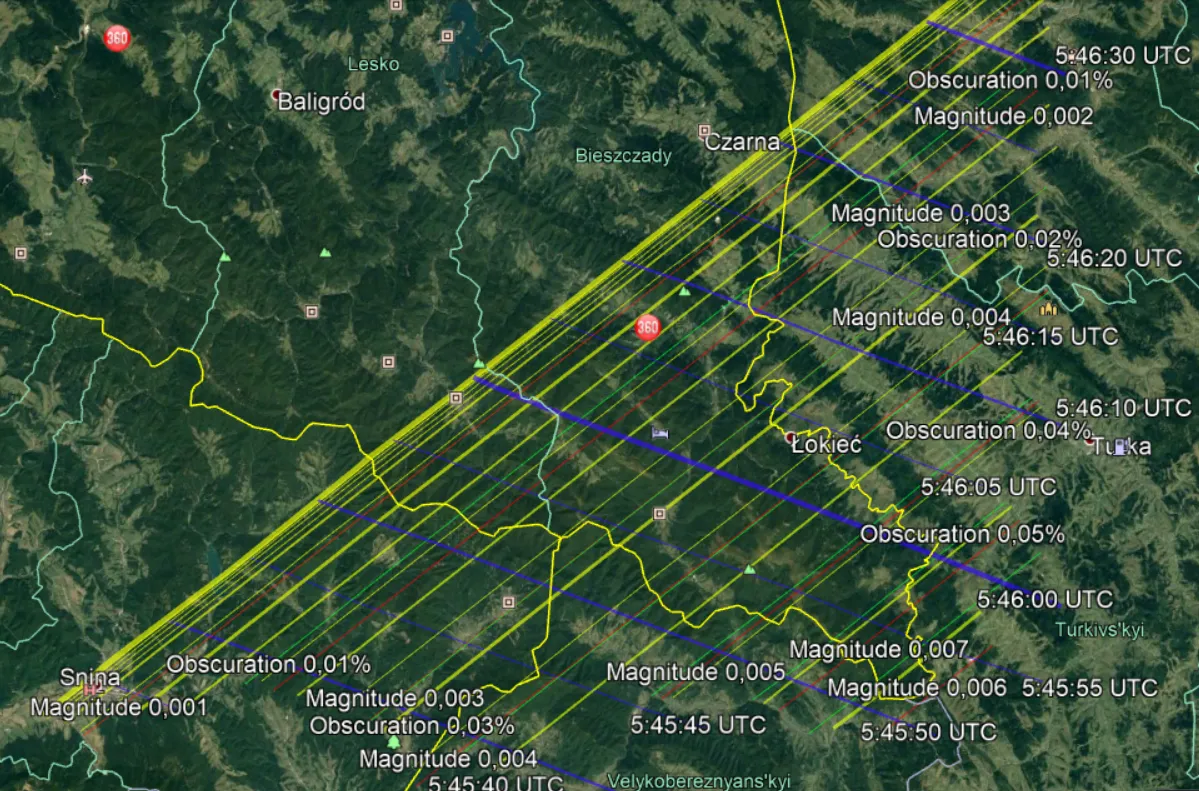
I marked a few focal points, from where this event can be observed (Pic. 19, 20).

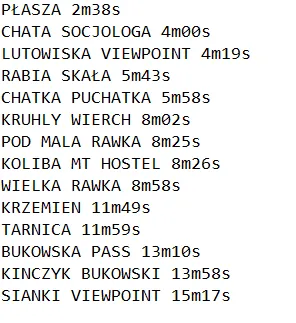
On the left, I listed a dozen or so focal points, from where we can attend to see the partial (edge?) solar eclipse in Bieszczady region (southeasternmost corner of Poland). The longest duration of this celestial event falls very close to the southernmost part of Poland, reaching about 15m18s with a magnitude of 0.007. It makes the solar eclipse of 2020 imperceptible from Poland. However, with H-alpha filters we can have a quite intriguing observation, especially in the location, where the eclipse will be “the deepest” whatever it means. I think, that there is no option to see it without any magnification, although who knows? If you own a telephoto lens or binoculars you can try to catch the lunar disk eating away the solar limb.
Staying with the duration of this event I would like to present the details on the map below (Pic. 21).
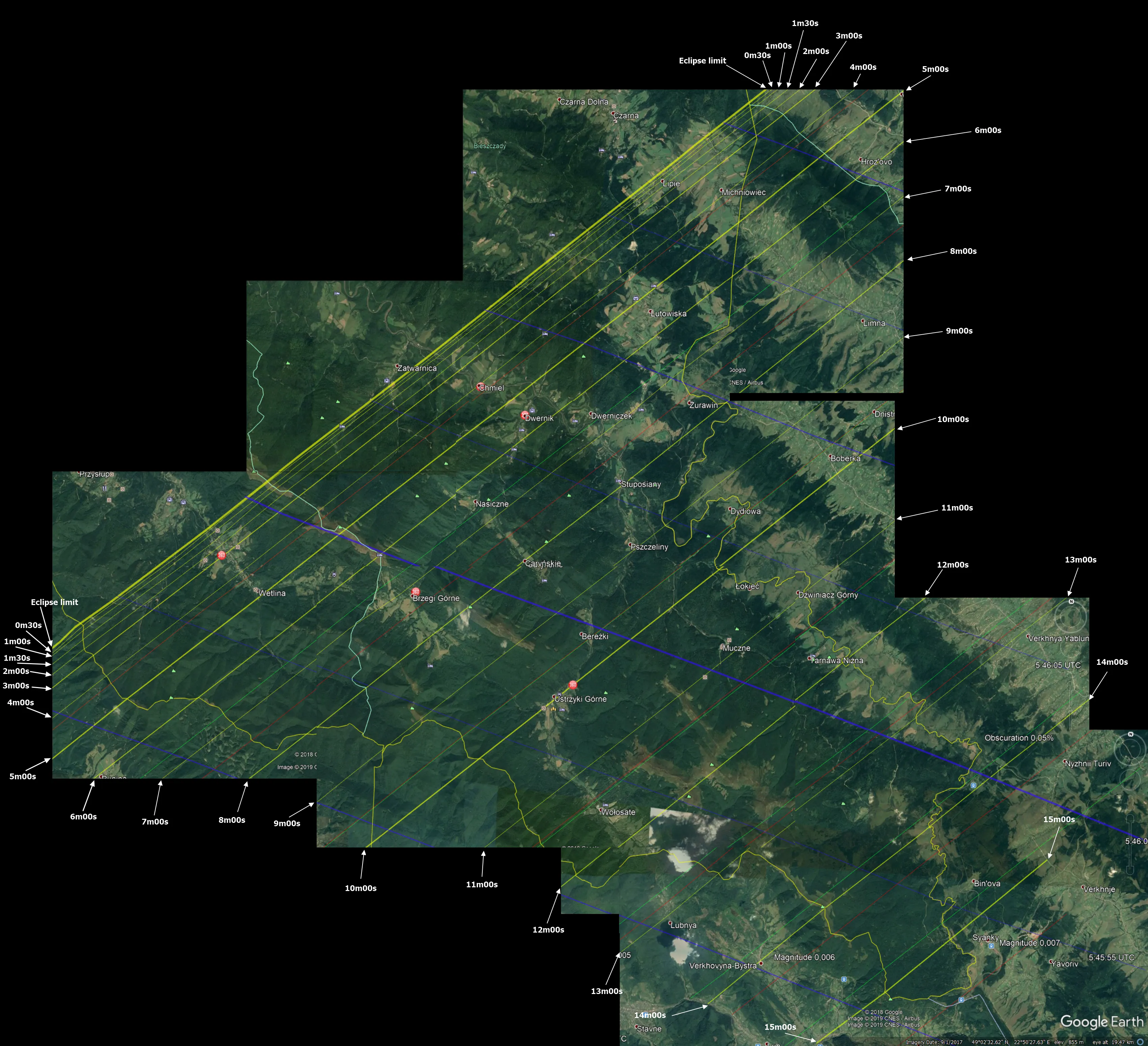
The Slovakian-Polish-Ukrainian borderland will face up to 9m00s duration of partiality. Unfortunately, there are some discrepancies between NASA and Cartes du Ciel’s computations. Whereas Fred Espenak says, that in Chatka Puchatka mountain hut we should enjoy 5m58s of the partial phase, the Cartes du Ciel 4.0 software says, that the eclipse won’t happen in this location at all (Pic. 22).

I believe, that Fred Espenak’s computations are more precise, so basically the Połonina Wetlińska range will be diverted between non-eclipse conditions (Smerek peak) and 7m05s of partiality (Dwernik valley). If we watch it through a white filter we should see something like in the image below (Pic. 23).

It looks incredible then. Doesn’t it?
Considering the most favorable Polish locations for the 2020 partial (edge?) solar eclipse observation with an H-alpha filter, we should expect up to 30min joy (Pic. 23) or even more depending on the conditions.
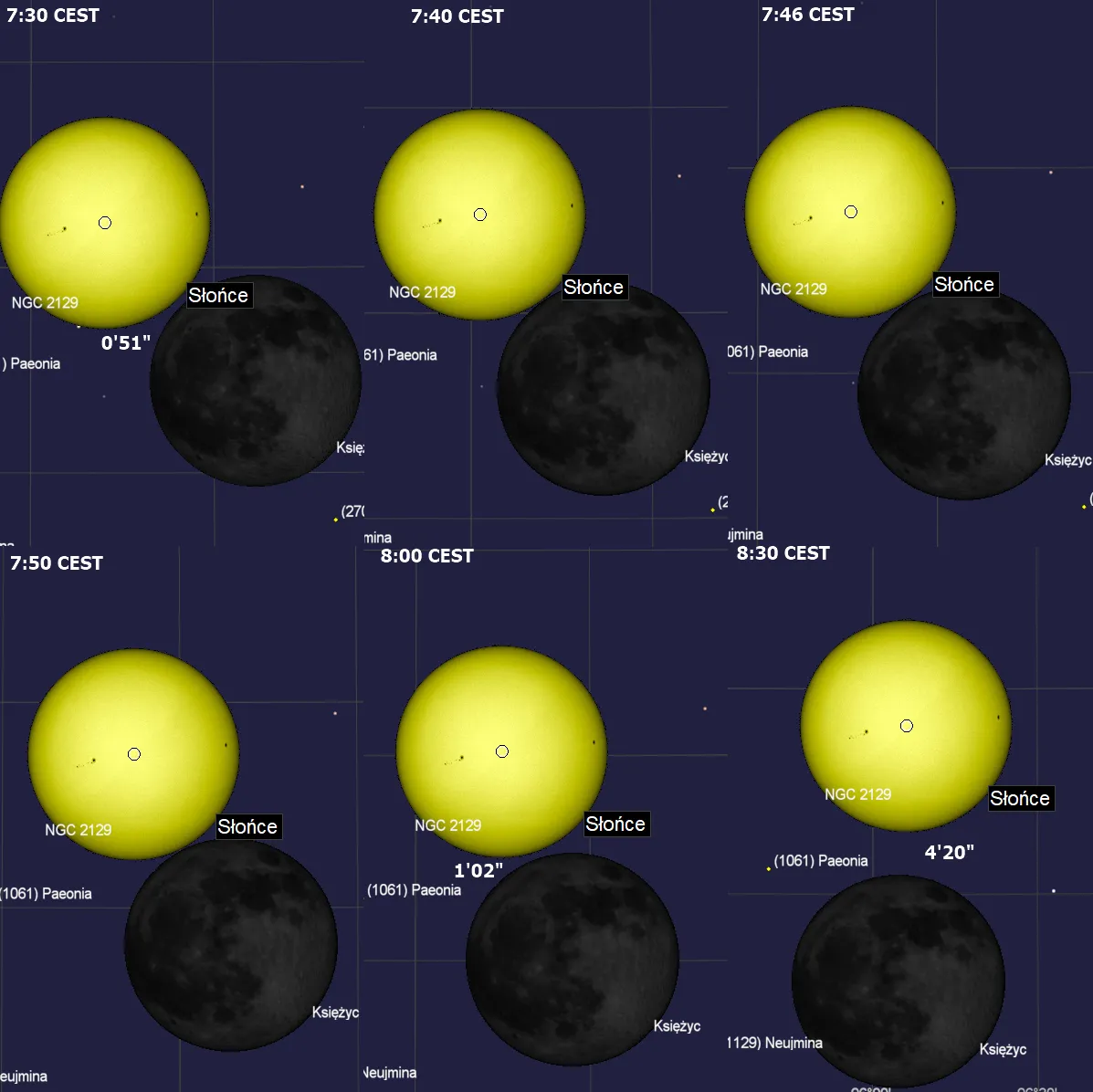
Apart from Bieszczady Mts., where the partial (edge?) solar eclipse will happen, the H-alpha observation can bring curious results also in other parts of Poland (Pic. 24), because even on the opposite side of the country the distance between the Sun and Moon won’t cross 5 arcminutes.
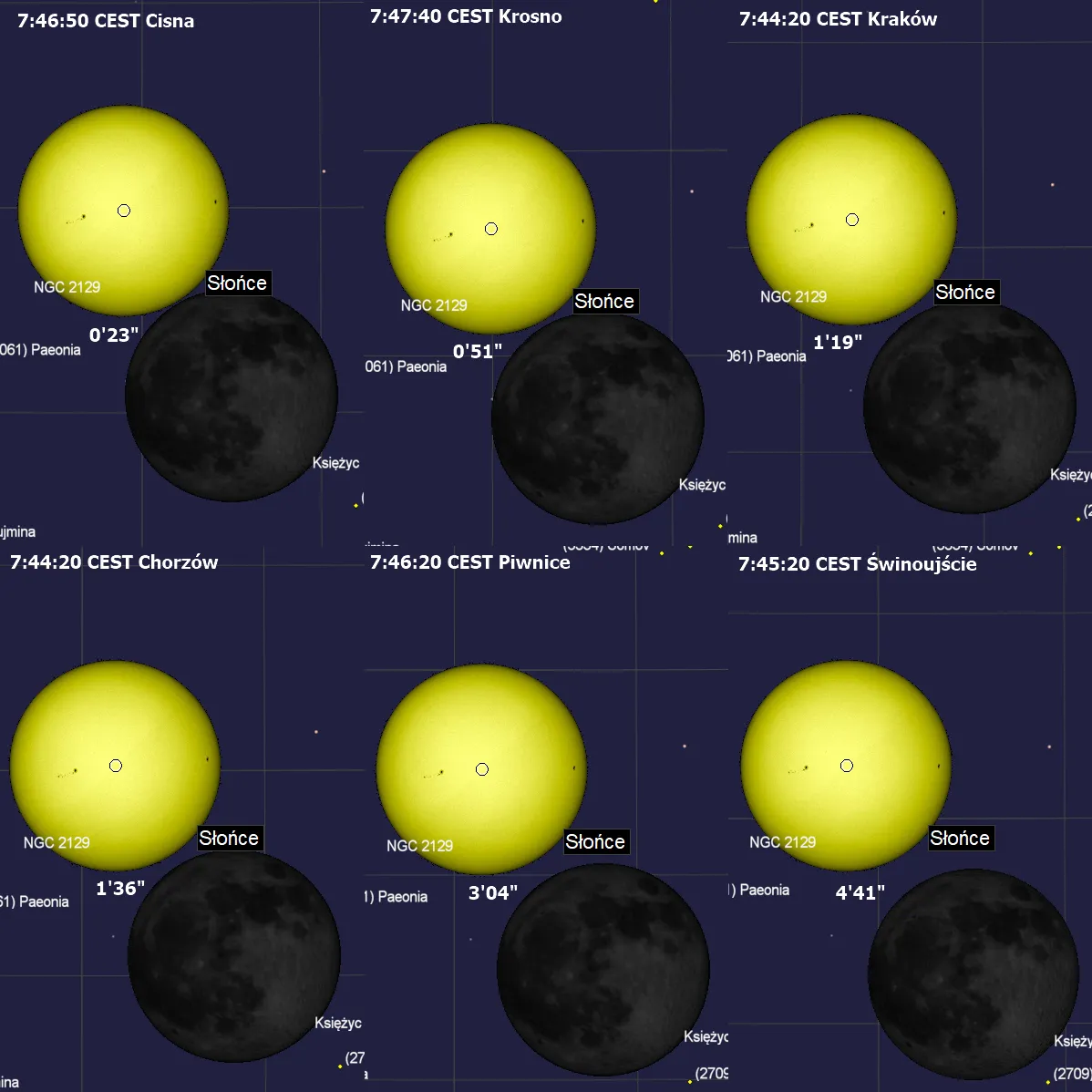
Having in mind, that through H-alpha we can see the lunar limb earlier, then it starts to eat out the solar disk, and consequently, afterward, it leaves the solar disk, shall we add up other “contacts” like 0 contact and V contact?
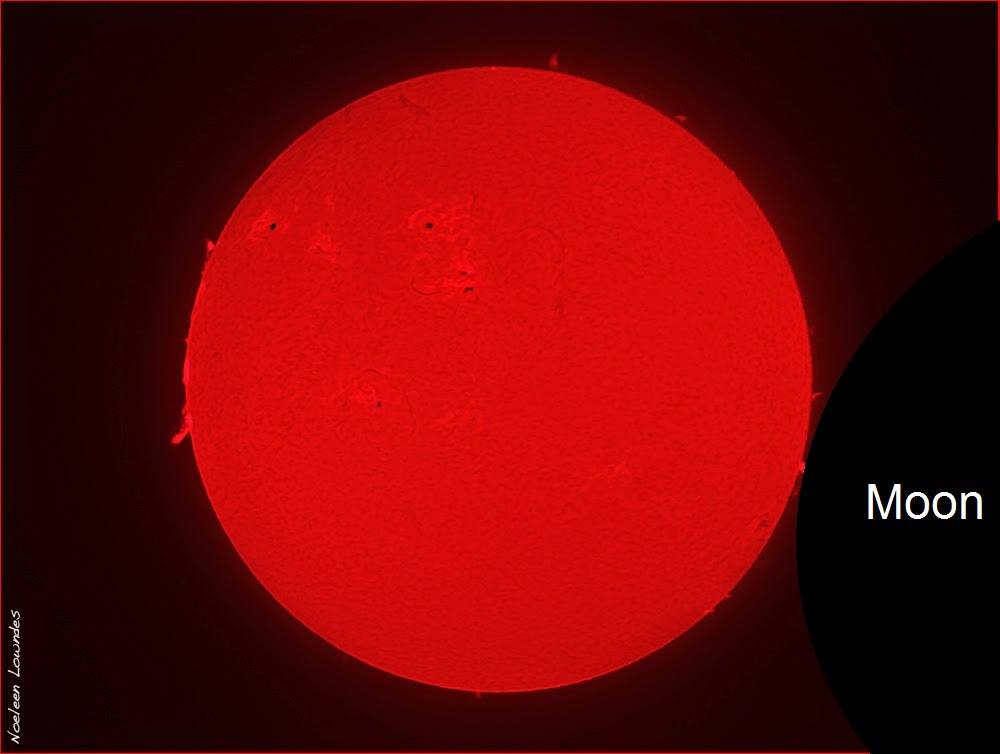
The answer is very pitchy, due to the chromosphere conditions, although I live it with you 🙂
As a conclusion of this section, I would like to add up, that all this stuff can be much more precisely calculated with special formulas. I have given you only a hint, on how to gauge the local circumstances in particular (I believe your) location.
3. Protuberant (?) transit of Venus on June 3-4, 2020 – this is a possible event when some vast solar prominence emerges at the Venus path. Between 18:00 and 19:00 UT on June 3, 2020, the Sun and Venus inferior conjunction reaches the maximum. As a result, these two objects are very close to each other, corresponding to about one-third angular solar disk diameter seen from the Earth (Pic. 26).
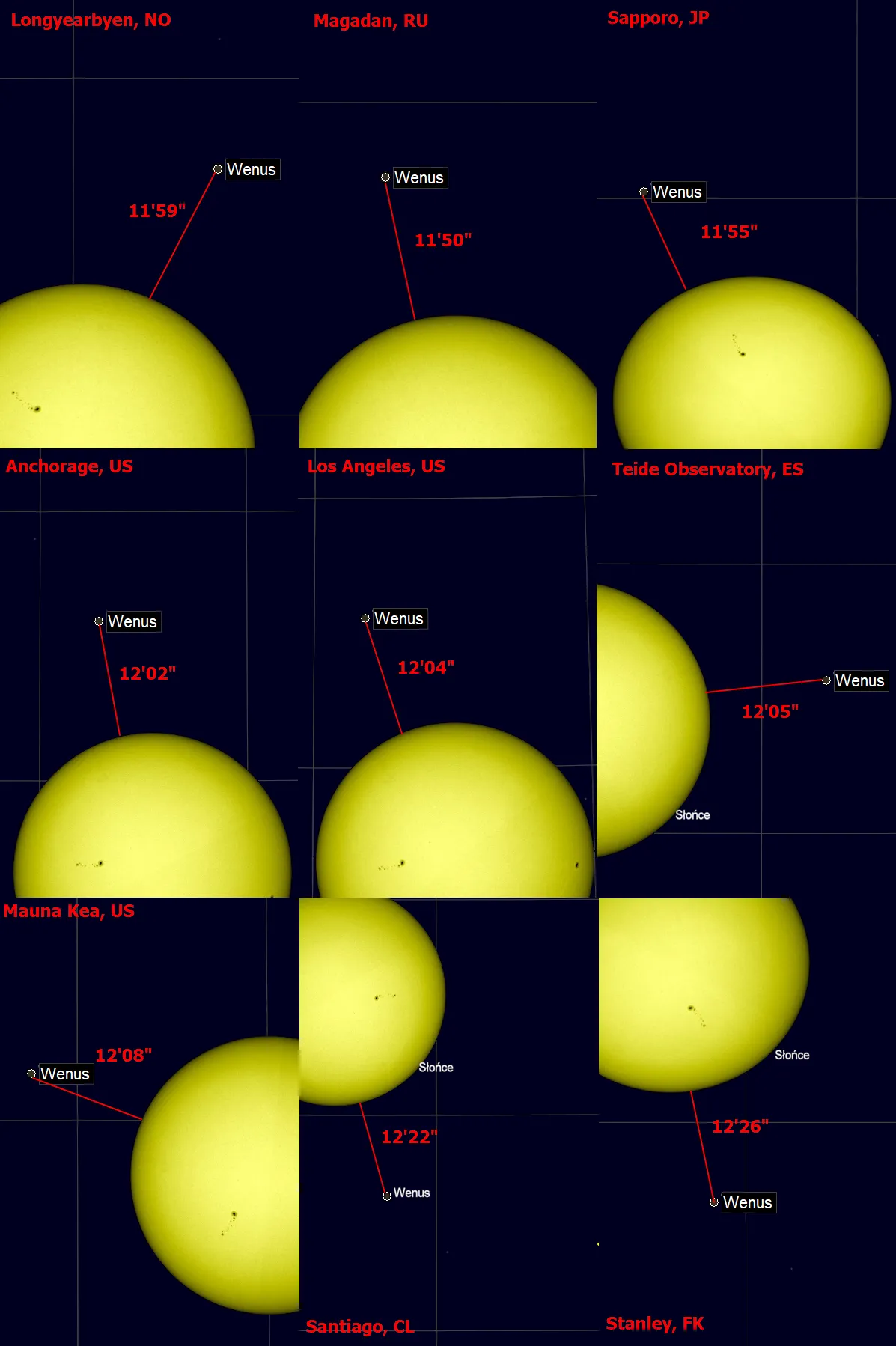
The best conditions to chase the protuberant (?) Venus transit appears to be in the northern hemisphere in the polar day zone (Pic. 19). At Siberia, the angular distance between Sun and Venus will be squeezed down to 11’50”, which can be equal with prominence rising about 520-530000km above Sun (Pic. 17).

On the opposite side of the globe, at the Falklands and the northernmost edge of Antarctica, where the Sun advances before the solstice, the distance is to be almost 12.5′. That requires prominence rising about 550000km above the solar surface (Pic. 18).

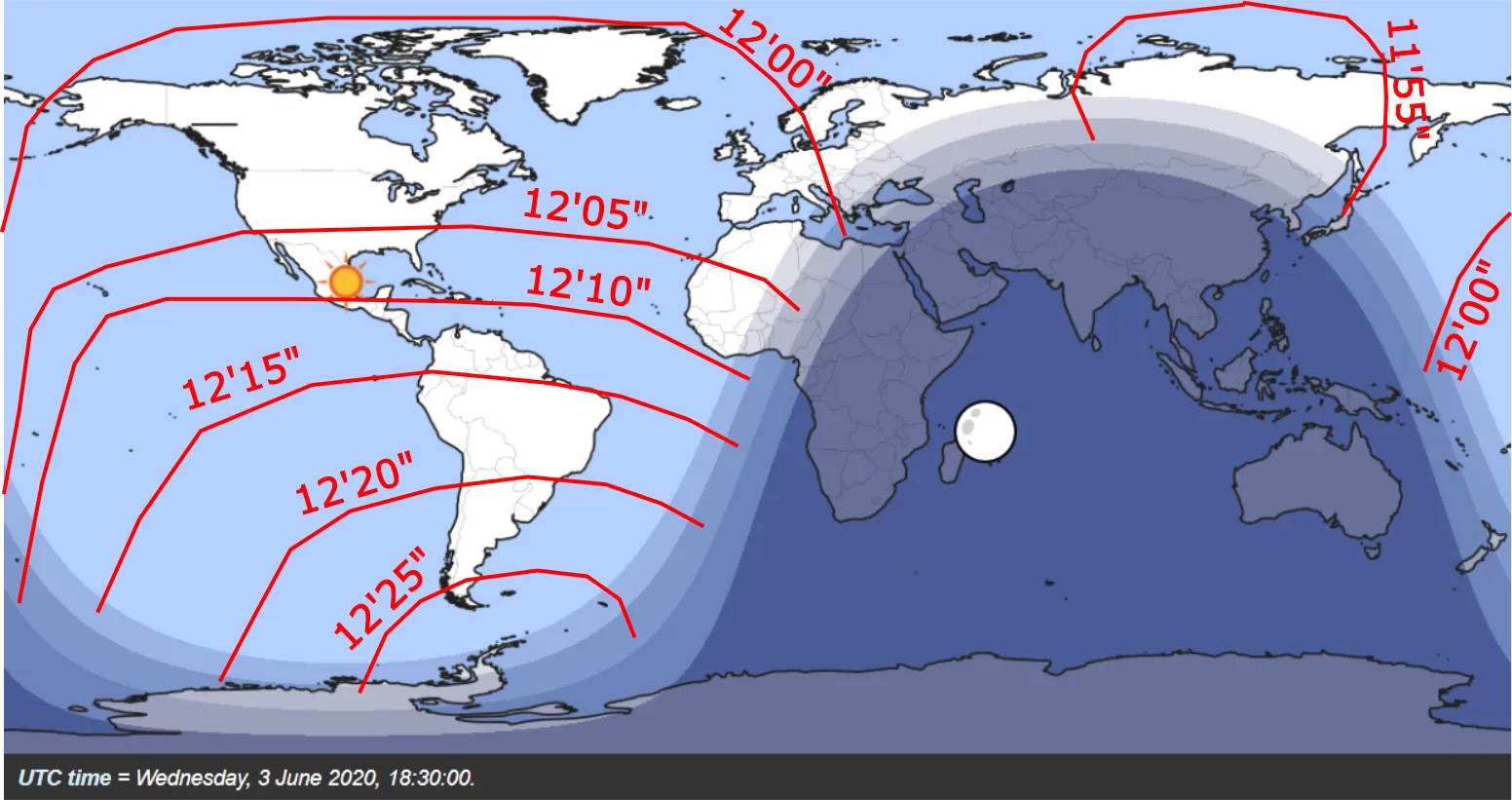
This observation can be really unique when someone will be able to catch it. I hope, that my colleague – Bartosz Wojczyński, who thought about this rare celestial event during our 2017 total solar eclipse observation in Wyoming, will see it.
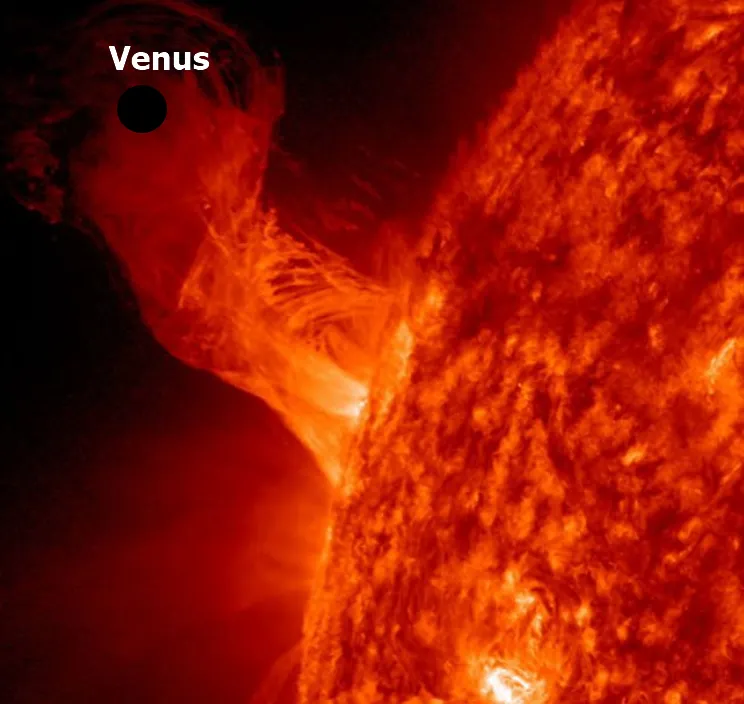
4. Sunrise & sunsets – are also these celestial events, which can be watched in H-alpha filters. The observation can be tweaked by local horizon circumstances i.e. mountains. One major demerit of these observations is the Earth’s atmosphere. We can face bigger cloudiness near the horizon (i.e. due to the perspective effect) or extinction, which can seriously impair our results. On the other hand, the local horizon can be higher, simplifying this kind of observation. Everything depends on the local topography and surroundings (trees, artificial objects, etc.) in this case (Pic. 21).

5. ISS transit – can be also interesting. Because the space station moves rapidly, there is no point in saying, that our event will be much extended, but we can try to snap it with some prominence in the background.

4. SUMMARY
This text shows the proposed ways to observe solar events using the H-alpha filter. All computations are very basic and pictures provide features rather than assumptions instead of strictly precise ephemeris. The goal of this article is to aware, that these kinds of sun-watching are possible and can be one of the most intriguing phenomena to see in the sky. It’s also good to check the solar weather before you attend to this kind of observation. Despite only a few forthcoming phenomena within one year cycle 2019-2020 this advice will be valid for further solar events worldwide.
Mariusz Krukar
References:
- Chen Y., et al., 2019, Flame-like Ellerman bombs and their connections to solar UV burst, (in:) Solar and stellar astrophysics
- Fredman Roger A., Kaufmann III, William J., 2008, Universe, W.H. Fredman and Company, New York
- Judge G. P, Tritschler A., Low B.C., 2011, Thermal fine structure and magnetic fields in the solar atmosphere: spicules and fibrils, (in:) The astrophysical journal letters, vol. 730, no.1
- Pikel’ner S.B., 1971, Nature of the fine structure of the middle chromosphere, (in:) Solar Physics, vol. 20, i.2, p.286-294
- Rutten J., et al., 2007, Ellerman bombs: fallacies, fads, usage, (in:) Journal of Physics: Conference Series, vol. 440.
- Zirin H., 1988, Astrophysics of the Sun, Science, New York
Links:
- https://solarscope.co.uk/
- Lunt solar systems
- Guide to H-Alpha filters and telescopes
- Observing the Sun in H-Alpha
- H-Alpha explanation and applications
- What are hydrogen-alpha and calcium filters
- Solar-fibrils
- Skyandtelescope.com: Observing the Sun
- Skyandtelescope.com: Guide to observing the Sun in H-alpha
- Solar spicules explained
- Astronomyconnect.com: Observing the Sun in hydrogen-alpha
- Apod.nasa.gov: Jets on the Sun
- https://www.cloudynights.com/topic/622783-ar2713-a-reach-field-of-elerman-bombs-and-spiculaes-high-res/
- NASA: Incredible Solar Flare, Prominence Eruption and CME Event (SDO/HMI visible light)
- Solar flares
- Solar photosphere features
- Solar facula
- http://astropixels.com/ephemeris/sun/sun2019.html
- http://www.faculty.virginia.edu/rwoclass/astr511/lec3-f03.html
- July 2012 solar superstorm
- Solar activity
- Solar activity forecast
- Science.nasa.gov: Long-range solar forecast
- https://www.nasa.gov/feature/ames/solar-activity-forecast-for-next-decade-favorable-for-exploration
- Earthsky.org: Latest predictions of the solar cycle
- https://spaceweather.com/
Forums:
Wiki:
- Balmer_series
- Coronal_mass_ejection
- Ellerman_bombs
- Facula
- H-alpha
- Hydrogen_spectral_series
- Spectral_line
- Solar granule
- Solar_flare
- Solar plage
- Solar spicules
- Solar storm 2012
Youtube:
Read also:
- ISS transit across the Sun & Moon
- Top 10 intriguing things to see during solar eclipse
- Transit of Venus – have you seen this celestial event?
- Transit of Mercury – 9 May 2016

